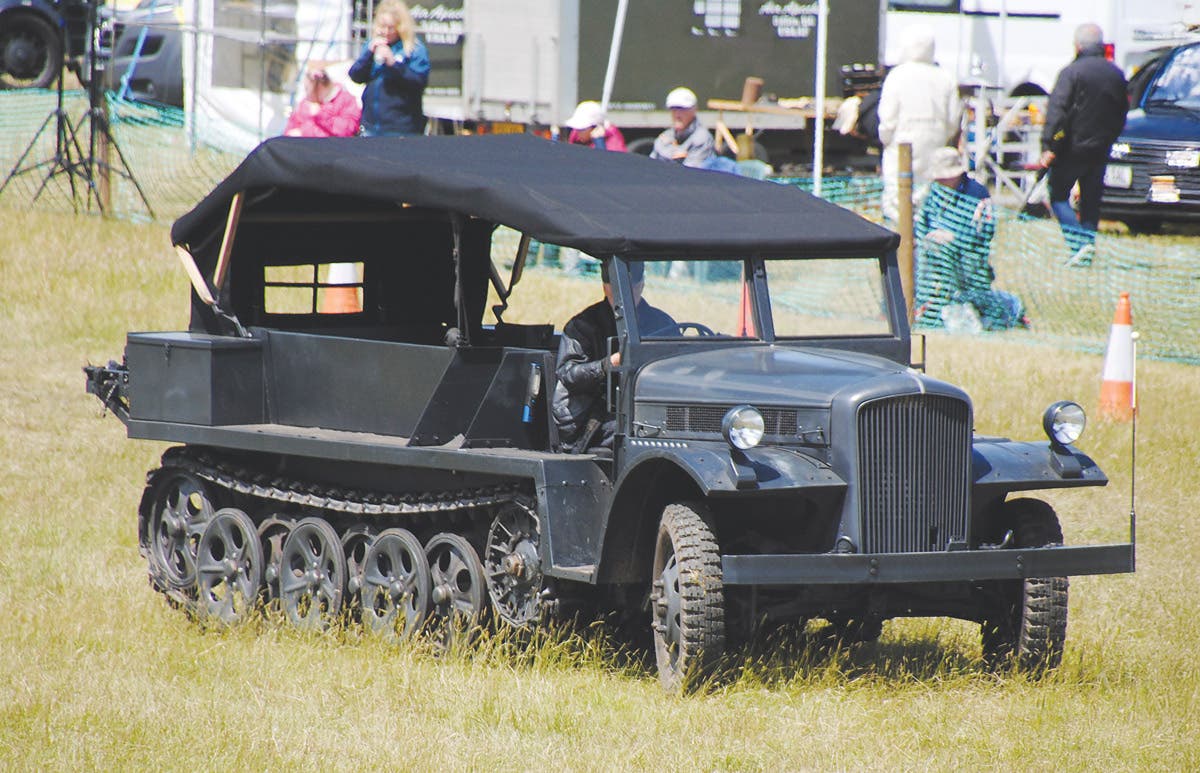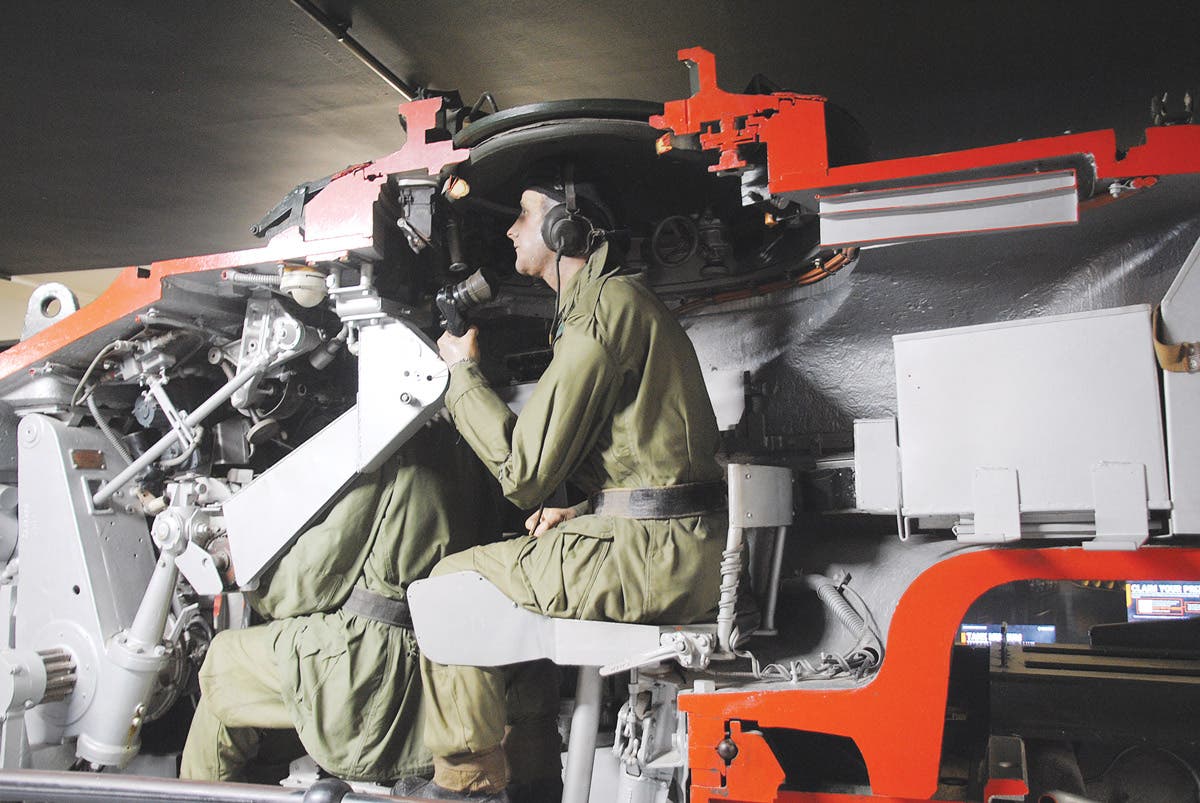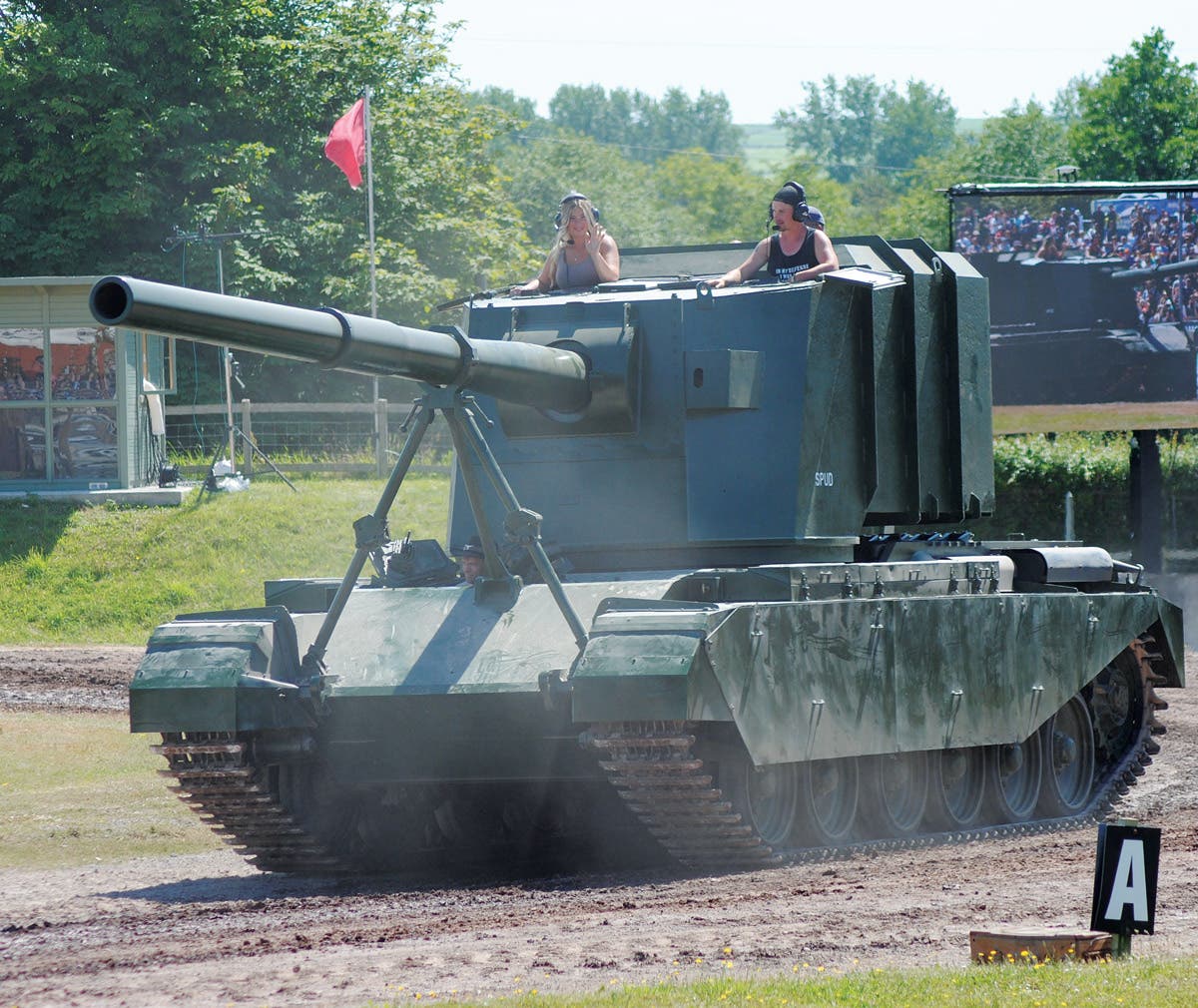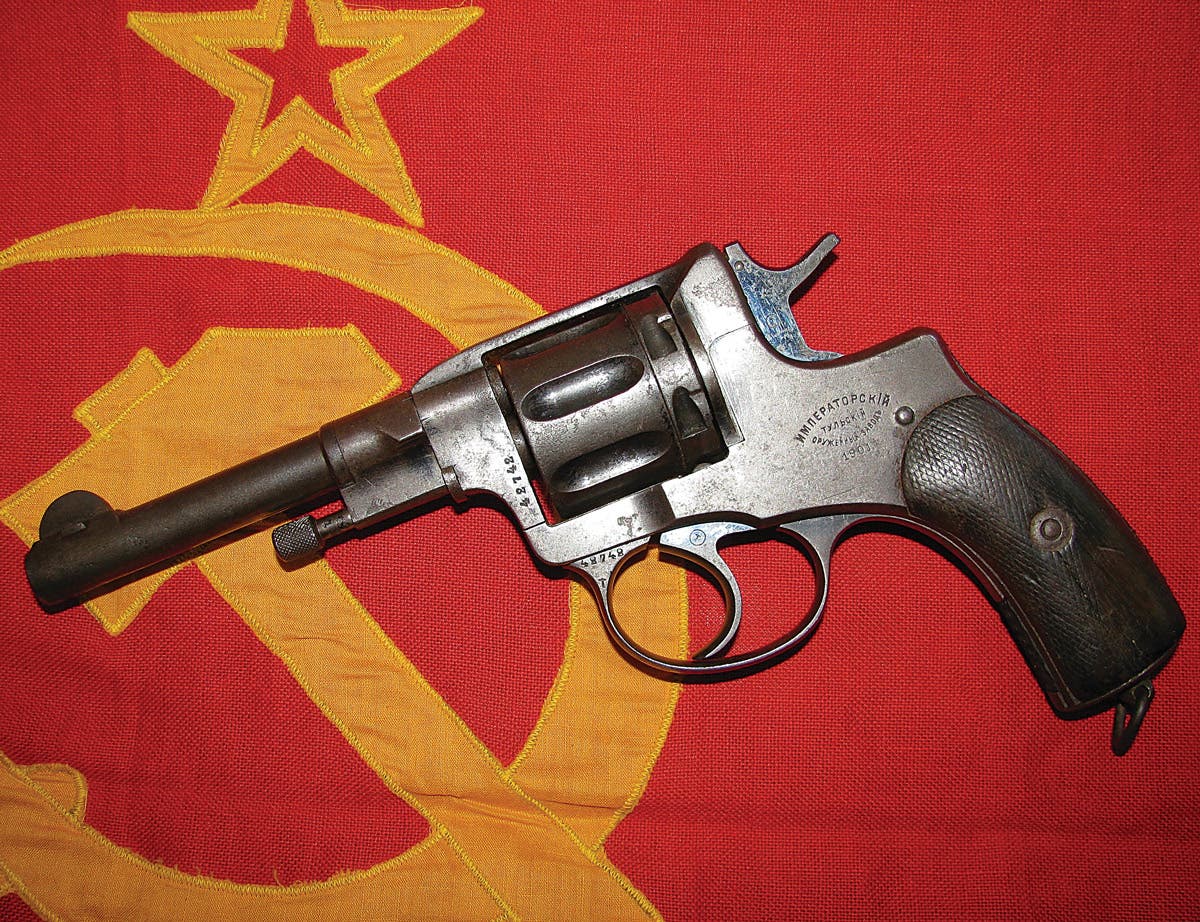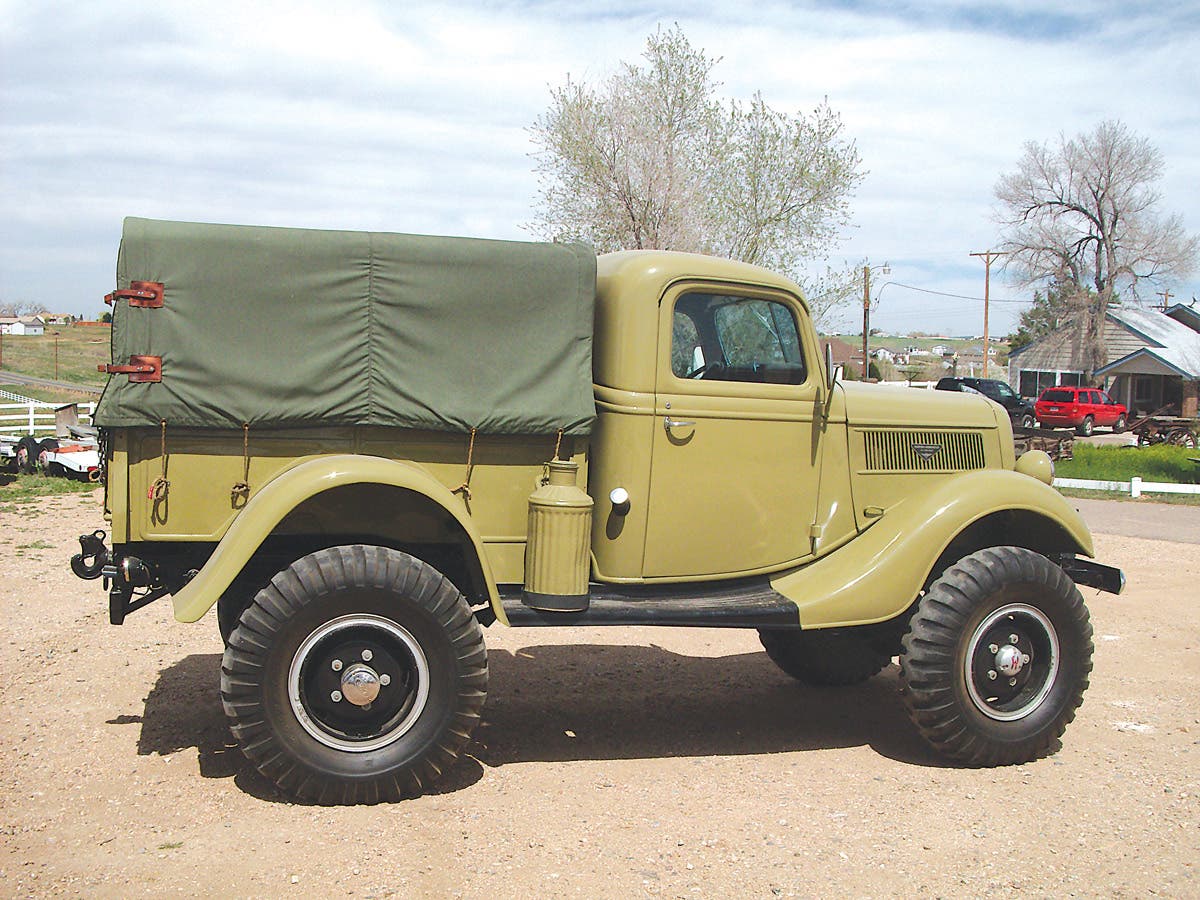Now that you have adopted a LARGE Military Vehicle…
Once you buy it, you become a caretaker of history. Here’s some advice on how to maintain it, store it, and enjoy it.
WHAT’S A “LARGE HMV?”
Size being relative, what would be the definition of a large military vehicle? In these days of Lilliputian cars and SUVs, an M37 or a HMMWV might seem large to many people. However, for the purpose of this article, let’s define large HMVs as those having more than four wheels and/or two axles. These would include WWII vintage Dodge WC63s, the Chevrolet G506, and the Ford GTB Burma Jeep, all of which are rated for 1-1/2 tons of cargo.
The most common large U.S. military vehicles in the HMV hobby are the 2-1/2 ton trucks, often called “deuce-and-a-halfs” or “deuces.” These include the WWII GMC CCKW, the International Harvester M-5-6, and the Studebaker US-6.
Dating from the Korean and Cold War eras is the G-742 family of vehicles, which includes the Reo M35 and M34, usually powered by Reo 331 cid. gasoline engines. Also from this period is the G-749 family of vehicles that include the GMC M211 and M135, powered by GMC 302 cid. gasoline engines. Only the G-742 family and the ubiquitous M35 soldiered on as a series into the Vietnam War era and up to the present day.
Most Vietnam era M35 deuces were powered by LDS 427 cid. multifuel engines, which were basically diesel engines that could also run on gasoline or jet fuel in emergency situations. Most newer and present-day M35 series trucks are powered by straight diesel engines. The same may be said of the M35’s larger brothers, the G-744 family of vehicles, commonly called 5-tons.
Of course, there are many other large vehicles commonly found in HMV hobbyist’s hands and readily available to new recruits; not only trucks of many makes, models and sizes, but also half-tracked, full-tracked, and amphibious vehicles... not to mention tanks, armored cars, and various tactical fighting machines. The purpose of this article is not to focus on any specific type of vehicle but rather to offer some basic advice about owning and maintaining large HMVs in general. There are many things about owning a large vehicle that sometimes aren’t considered by prospective buyers; and I hope these tips will help prepare you for large HMV ownership.
BEFORE YOU BUY
Historic military vehicle hobbyists come in as many shapes, sizes and ages as the vehicles themselves. Many start out by purchasing smaller vehicles, such as a Jeep, M151 MUTT, or an M37. Many are satisfied with these small vehicles and enjoy a lifelong association. On the other hand, some folks start out with a Jeep and work their way up the scale, perhaps adding a WWII Dodge 3/4 ton truck, a Dodge M37 3/4 ton, or a Kaiser M715 1-1/4 ton truck to their stable, then going on up to a 1-1/2 ton vehicle such as a Chevrolet G506 or a Ford GTB, and finally venturing into the realm of 2-1/2 ton trucks. Some folks go even farther up to a 5-ton or larger vehicle.
For many HMV enthusiasts, this process is gradual and fairly painless because they learn as they go that an M37 (for example) naturally requires more engine and gear oil, a bit more antifreeze, and a little more chassis grease than a Jeep. And of course, larger tires are more expensive.
If they move up from there to a GTB or G506, they now find they have six tires instead of four, and a little more oil and grease to buy. Therefore, it’s usually not a huge surprise if they choose an even bigger HMV, such as a deuce, and find that lubricant requirements are perhaps double for those of a Jeep or a MUTT, as well as antifreeze capacity... not to mention ten tires (for the most common deuces) and six sets of brake shoes and associated parts instead of just four. And, while most M-series vehicles have two 12-volt batteries for their 24-volt electrical systems, large M-series vehicles naturally have bigger batteries.
Don’t forget that fuel expenses have probably doubled from those of a Jeep or a MUTT — if not tripled!
Just as habitat and environment can only support a certain number of creatures or plants, many HMV owners find their hobby budgets can only support either a certain number of vehicles or a certain size of vehicle. While most people come to this conclusion in a logical way — “I’d really like a deuce, but I can’t afford one right now” — a few may learn in the school of hard knocks.
One hard lesson might be suddenly realizing that to change a vehicle’s engine oil requires three gallons instead of six quarts. And, when baby needs new shoes, it means ten tires at around $150 a pop instead of just four at $70 each, while a new set of tracks for a half-track could cost about $3,000.
Speaking of tracked vehicles, and even though you may have forty acres out back to exercise your half-track, APC, or Sherman, you may want to take it to a show or parade sometime. This will require renting or buying some sort of heavy transportation. Like most things discussed in this article, doing research in advance will usually save you a lot of money. In other words, the time to think about these things is before you buy a large HMV, not after it’s sitting in your driveway.
While many HMV hobbyists do start small and work their way up, thus preparing themselves for bigger vehicles, others may be tempted into jumping right into large vehicle ownership. This is often because the prices of many 2-1/2 ton trucks are the same or lower than the price of many Jeeps or other small vehicles. In the case of M35-style deuces, this is because there are so many available, which in turn is because as a series they have been around since the early 1950s.
While there is nothing wrong with acquiring a deuce or other large vehicle as a first HMV, it is important that you do your homework before buying. Being prepared should prevent nasty shocks when it comes time to change your new vehicle’s engine oil, give it it lube job, buy it new tires, have it trucked to a show… or just fill up the fuel tank.
A wise buyer of a large vehicle will plan for future expenses, considering possible breakdowns, major parts replacement —such as engines, transmissions, axles or transfer-cases — and major repairs beyond the scope of one’s home shop. One may also consider commercial sources for many items they may have been buying retail for their small vehicles. For example, you may be accustomed to buying five quarts of oil and a filter for your car at an auto-mart store. Yet, if you were to purchase the same oil in a five-gallon tub or a fifty-five gallon drum at an oil company depot, the price per quart might be half of what the auto-mart charges. This also applies to gear oil and chassis grease — usually much cheaper per quart or tube in tubs, drums, and cases.
Of course, the initial cost of such things is higher, but the price in the long run is far lower. When buying lubricants in bulk, one also needs the right equipment to get those lubricants into their vehicle. (You might begin by planning how you’re going to get a 55-gallon drum of oil out of your pick-up and into your shop after you get it home.) Then you will need oil filler cans, pumps, funnels and grease guns. Likewise, you’ll need pans and containers for draining old lubricants out of your vehicle. You may often find these items at swap meets and flea-markets for a fraction of their new cost.
You should also plan for the disposal of old lubricants. If you’re buying from an oil depot you may find they also accept used lubricants for recycling.
An additional bonus in dealing with a wholesaler is that many such places also offer top-quality batteries at lower than auto-mart prices. Oil depots may also offer fuel and oil filters at low case prices. Likewise, bearings may usually be found at bearing houses much cheaper than at auto parts stores. The same applies to businesses that specialize in things such as hoses, drive belts, fittings and brake parts.
While a clerk at an auto parts store may just give you a blank expression when presented with a wheel cylinder from a GMC M211 and asked if they have rebuild kits, someone at a brake supply house might merely ask how many you want. The same goes for having your brake shoes relined: Most such businesses can reline any kind of brake shoe regardless of vintage. If there isn’t a local business that relines brake shoes, just do a Google.
SO MUCH TO CONSIDER!
With these things in mind, it seems logical that anyone considering the purchase of a large HMV should not only do the usual homework, which includes acquiring a thorough knowledge of the type of vehicle they want — its average purchase price, parts availability, safe highway speed, off-road performance, service and maintenance requirements, and any common quirks or faults — he or she should also do additional research into a large vehicle’s special needs and how to save money while meeting those needs.
Another thing some folks don’t consider when buying a large vehicle are license requirements, both for the vehicle and its driver. I’ve lived in several states, and driver and vehicle license laws vary a lot, as well as how strictly they’re interpreted or enforced.
In California — at least when I was growing up — my M38 would have been considered a “truck” instead of an automobile had I fitted it with a half-cab. This would have required a commercial license. Today, some SUVs seem to have blurred those once strongly-enforced laws! Still, a friend of mine recently got a ticket for hauling lumber on his boat trailer, because the trailer wasn’t licensed for “cargo.” I’ve also heard of folks with Historical or Classic trucks being ticketed for were hauling actual cargo in their vehicles.
Similarly, you used to be required to have a commercial driver’s license in California to operate any vehicle with three or more axles. An exception was later made for “three-axle house cars.”
Many states determine vehicle and drivers license requirements, as well as fees, based on vehicle weight. Of course, most of these laws apply to commercial vehicles, and many states have made laws to accommodate historical, vintage, or classic vehicles.
Most states seem to define a Classic or Historical vehicle based on the its age. This may be an important thing to consider if you’re shopping for one of the newer deuces or 5-ton trucks. Even if you want to restore your new deuce as a Vietnam-era vehicle, you may still have to license it as a Commercial Truck instead of an Historical vehicle if the title says it is less than a certain number of years old. Complicating matters is the fact that many HMVs are civilian titled by the year in which they were released from military service, not when they were actually built. So, again, this is something one should research.
Finally, a potential buyer of any HMV must be absolutely sure a vehicle has a clear title!
IMAGINE HOW MUCH ROOM IT WILL OCCUPY
It might sound funny, but some folks who buy a large HMV don’t know how large it is until they get it home. Keep in mind that any vehicle looks smaller in pictures, and most large vehicles appear smaller when viewed in wide open spaces. Even if you know the actual measurements of a vehicle (found in most manuals), this data may not register until the vehicle is sitting in your driveway. Then you may realize that even though it fits, there is not enough room between it and a fence for a door to be opened. Or, the vehicle’s constant shade will kill your petunias. Or, maybe six inches is not really enough clearance to easily get your car in and out every day. In other words, consider the small things that may come with large vehicle ownership.
Speaking of clearance, an inch or two may not seem important until you find that your new HMV is an inch too tall to clear your garage door or the rafters inside. Of course, you might let the air out of all ten tires, or perform a “field-modification” on their garage. Also consider how much space you might have to work on your vehicle once it is inside.
BIGGER ANIMALS REQUIRE BIGGER GEAR
You should consider whatever additional tools and equipment you may need to easily and safely repair and maintain a large vehicle. For example, changing a tire on an M35 is going to take more time and sweat than doing the same on an M38. You will obviously need a large jack. A twelve-ton bottle jack is sufficient for most common large HMVs. You will also need the proper lug wrench.
When buying a vehicle from a private seller, jacks and lug wrenches are often included. However, they are usually not included when buying a vehicle from a dealer — and almost never when buying a vehicle at auction.
If you are going to fix your own tires, they will need the correct tools for that job, as well as an air compressor. Full or half-tacked vehicles naturally have their own special needs when it comes to repairing or replacing their tracks or track pads; and a wise, potential buyer would do as much research into the price and availability of special tools as they would in learning about the vehicle itself.
Just as you can’t toss a 9.00 x 20or 11.00 x 20 tire and wheel across their garage like a 7.00 x 16 MUTT wheel, a potential large HMV owner must consider whatever special equipment he or she will need to service and repair their vehicle without ending up with a slipped-disk or worse. In other words, how will you handle the heavy things?
You might be surprised to learn that one of the major causes of backaches in the HMV hobby comes from installing winches on Dodge WCs, M37s and M715s. And, except for the Warn Mil-Spec 12000 winches specific to the HMMWV, and the extremely rare military winches for jeeps, these are the smallest winches commonly found in the hobby.
The same applies to removing and installing transmissions, transfer-cases, and axle third-members. To do such jobs safely — not only your safety, but also the safety of your vehicle’s components — you need the right equipment. A strained back will usually heal, but a crack in a transmission’s case caused by falling onto a concrete floor won’t.
Three of the most useful pieces of equipment for working on large vehicles are: A chain hoist, a wire rope come-along, and a transmission jack. A very important thing to consider before using either of the first two items is the strength of your lift point, that is, the point from whatever you are going to hang a hoist.
Most garage, shed or barn rafters were not designed for hoisting heavy objects or pulling vehicle engines. And, unless you happen to be a structural engineer, it’s usually unwise to try to strengthen such rafters with additional wood or chained-on pipe.
A smarter move is to buy, build (or have built) a lift point from sturdy timbers, stout pipe, or steel beams. It would also be wise to test it with a much greater weight than your vehicle’s engine or winch before attempting to use it.
Related to this, always get a larger capacity hoist or come-along than the heaviest object you plan to lift. You don’t really want a ton of iron hanging from a “one-ton” hoist! This also applies to so-called “cherry-pickers.”
Most such items offered in tool catalogs or over the internet are intended for small civilian vehicles and may not have either the reach or the safe capacity to remove a Multifuel engine from a deuce-and-a-half. The same goes for jack stands and transmission jacks: Always get the biggest and sturdiest you can afford.
Just like lubrication and oil change equipment, hoists, come-alongs, and transmission jacks may often be found at swap-meets and flea markets for a fraction of their cost when new. In these cases, you want to inspect the items carefully before trusting them with your life and limb, and your vehicle’s expensive components.
It’s always important to consider the small things when performing tasks such as removing or installing winches or engines. You may have a very stout hoist and lift point, but what about the chain, hooks, or nuts and bolts you’ve attached to the winch or the engine? Transmission jacks are something a lot of people seem to think they can build or cobble together at home.
On the other hand, just because you now own a deuce, GTB, 5-ton, or half-track, doesn’t mean you have to outfit your home shop to overhaul railroad locomotives. You can usually rent any of the heavy-duty items. And, if you’re joining the HMV hobby, you will probably make many new friends and might be able to borrow such things. There isn’t much sense in buying a ten-ton hoist or a 500-pound transmission jack you might only need once. Many HMV, vintage vehicle, and machinery clubs have tool pools that loan or cheaply rent special items.
However, a personal dual wheel jack may come in handy because one generally inspects and services a vehicle’s wheel bearings and brakes much more often than they pull an engine or transmission. Genuine G.I. dual wheel jacks can often be found for very low prices.
Alternatively, you can build an adequate support for removing dual wheels from a study furniture-type dolly; and I have used two-by-fours on top of two skateboards on several occasions. In these cases, jack up the vehicle’s axle with your bottle jack, positions the support beneath the wheels, then carefully letdown the jack so the wheels can be rolled away.
Hopefully, this article has given you a few useful tips, points to ponder and possibly research if you are considering the purchase of a large military vehicle.
You may also enjoy
*As an Amazon Associate, Military Trader / Military Vehicles earns from qualifying purchases.




